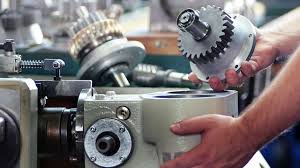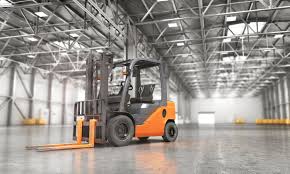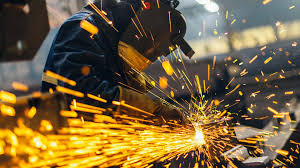Advanced Packing and Handling Techniques
Advanced Packing and Handling Techniques
The introduction of advanced technology in packing and handling techniques has significantly enhanced the safety and efficiency of moving services. These technological advancements ensure that customers' belongings are protected and handled with the utmost care during transit. here's how technology is changing packing and handling in the moving industry :
Smart Packing Solutions
Smart Boxes and Packing Materials: Some moving companies now use smart boxes equipped with sensors that monitor conditions like temperature, humidity, and shocks during transit. This technology is particularly beneficial for moving sensitive items like electronics or artwork.
RFID Tags: Radio Frequency Identification (RFID) tags are increasingly used to track items throughout the moving process. These tags provide real-time tracking data, reducing the likelihood of lost items and increasing overall transparency.
Robotic Assistance
Automated Loading and Unloading: Robotics technology is being integrated into the loading and unloading processes. Robots can handle heavy lifting and repetitive tasks, reducing human error and physical strain on workers, which leads to a decrease in workplace injuries.
Precision in Handling: Advanced robotics offer precise control when moving delicate items, ensuring that they are placed and transported without damage.
Customized Crating Technologies
3D Printing: Some moving services utilize 3D printing technology to create custom packing solutions tailored to the specific dimensions and needs of unusual or particularly fragile items.
High-Tech Protective Materials: The development of new, more effective protective materials—such as impact-resistant foams and temperature-regulating fabrics—helps ensure that items are well-protected against a variety of transport conditions.
These technological advancements in packing and handling not only enhance the safety and security of transported items but also streamline the entire moving process. By integrating these technologies, moving companies can offer more reliable and advanced services, setting new standards in the care and management of customer belongings. This commitment to utilizing cutting-edge technology in moving services provides customers with peace of mind, knowing their possessions are handled with the latest technological innovation.
Increased Safety and Security
The integration of technology into moving services has significantly heightened the levels of safety and security for both the belongings being moved and the data associated with moving transactions. Here's how technology is being utilized to safeguard every aspect of the moving process:
GPS Tracking Systems
Real-Time Monitoring: GPS tracking technology allows moving companies and customers to monitor the exact location of moving trucks in real time. This not only provides reassurance to customers but also helps companies manage their fleets more effectively, ensuring timely and safe deliveries.
Route Security: By monitoring routes, GPS systems help ensure that drivers adhere to the safest and most efficient paths, avoiding high-risk areas and reducing the chance of theft or accidents.
Enhanced Data Security
Encryption Technologies: Moving companies now employ advanced encryption technologies to secure customer data, from personal information to payment details. This protection is crucial in preventing data breaches and identity theft.
Secure Online Transactions: For transactions conducted over the internet, robust security protocols, such as SSL certificates and two-factor authentication, are implemented to safeguard against unauthorized access.
Improved Vehicle Safety
Telematics Systems: Modern telematics systems in moving trucks can monitor vehicle performance and driver behavior in real time. This technology helps identify potential mechanical issues before they become serious, ensures drivers adhere to speed limits and reduces risky driving behaviors.
Automated Driver Assistance Systems (ADAS): These systems, which include features like collision avoidance, lane departure warnings, and automatic braking, further enhance the safety of the transportation process.
Safe Storage Solutions
Climate-Controlled Storage: Technologically advanced storage solutions maintain optimal conditions to protect sensitive items from temperature extremes, humidity, and pests.
Security Monitoring: Surveillance technologies and alarm systems in storage facilities ensure that stored items are continuously monitored and protected from theft or damage.
These safety and security enhancements enabled by technology not only protect physical goods but also ensure the integrity of customer information, building trust and reliability in moving services. For customers, knowing that their belongings and personal data are handled with state-of-the-art security measures provides significant peace of mind during what can be a stressful time. Moving companies that invest in these technologies are setting new industry standards for safety and customer satisfaction.
Sustainable Moving Solutions
The moving industry is increasingly focusing on sustainable practices, driven by technology that helps reduce environmental impact. From eco-friendly packing materials to energy-efficient transportation, technology is enabling moving services to become greener and more sustainable. Here’s how technology contributes to environmentally conscious moving solutions:
Eco-Friendly Packing Materials
Biodegradable and Recycled Materials: Advanced technologies have led to the development of packing materials that are both sustainable and protective. This includes biodegradable packing peanuts, recycled cardboard boxes, and reusable plastic crates that offer robust protection without harming the environment.
Reduction of Waste: Technologies that help optimize packing strategies reduce the overall use of materials. For example, precise calculation tools and software can determine the exact amount of packing materials needed, minimizing waste.
Energy-Efficient Transportation
Electric and Hybrid Moving Trucks: As part of the shift towards sustainable practices, many moving companies are incorporating electric and hybrid vehicles into their fleets. These vehicles reduce carbon emissions and are more energy-efficient compared to traditional gasoline-powered trucks.
Optimized Routes: GPS and route optimization software not only save time but also reduce fuel consumption by finding the most efficient paths from one point to another, further lowering the carbon footprint of moving operations.
Waste Reduction Technologies
Digital Documentation: Moving away from paper, many moving companies now use digital contracts, receipts, and moving documents. This not only streamlines operations but also significantly cuts down on paper waste.
Reusable Moving Bins: Some companies offer customers the option to rent reusable moving bins, which can be returned after use. This practice reduces the demand for single-use moving boxes and supports a circular economy.
Sustainable Business Practices
Solar-Powered Facilities: Some moving companies use solar panels at their storage and office facilities, reducing reliance on non-renewable energy sources.
Environmental Certifications: Moving services seek out certifications like ISO 14001, which demonstrates a company’s commitment to environmental management systems and sustainability.
By integrating these technological solutions, moving services are not only able to offer more eco-friendly options to their customers but also promote a broader commitment to environmental responsibility. These sustainable practices not only appeal to environmentally conscious consumers but also contribute to a larger global effort to reduce the ecological footprint of industries worldwide. As technology continues to advance, the potential for even more effective and innovative green moving solutions looks promising, setting the stage for a new era of sustainable moving practices.
Future Trends in Moving Technology
As technology continues to evolve, the future of moving services looks set to become even more innovative and efficient. Here, we explore potential technological advancements that could further transform the moving industry:
Artificial Intelligence and Machine Learning
Predictive Analytics: AI and machine learning can analyze historical data to predict peak moving times, optimize pricing models, and even suggest the best dates for customers to schedule moves to avoid delays or high costs.
Automated Customer Service: AI-powered chatbots and virtual assistants could handle a larger share of customer inquiries, providing instant responses to common questions and freeing up human agents for more complex issues.
Internet of Things (IoT)
Enhanced Item Tracking: IoT devices could be used to track individual items throughout the moving process, providing updates on their condition and location in real time. This technology would be particularly useful for long-distance moves or when handling valuable or sensitive items.
Smart Containers: Containers equipped with IoT sensors could monitor the internal conditions (like temperature and humidity) and alert movers if the environment within the container deviates from the required standards.
Blockchain Technology
Transparent Transactions: Blockchain could revolutionize how payments and contracts are handled in the moving industry. By using this technology, all parties involved in a move could access a transparent, immutable ledger of transactions and agreements, enhancing trust and efficiency.
Decentralized Logistics: Blockchain could also facilitate more decentralized, peer-to-peer moving services, allowing individual movers and customers to interact directly without the need for traditional moving companies as intermediaries.
Robotic Process Automation (RPA)
Efficient Operations: RPA could automate many back-office tasks in moving companies, such as billing, payroll, and compliance checks. This would streamline operations and reduce the likelihood of human error.
Physical Robots: Advances in robotics could see robots not just assisting but taking over physical moving tasks, especially in structured environments like warehouses. These robots could load and unload trucks autonomously, ensuring precision and reducing physical strain on human workers.
Green Technologies
Advanced Electric Vehicles: As battery technology improves, electric moving trucks could become more viable for longer distances, significantly reducing the industry's carbon footprint.Integration of Renewable Energy: Future moving facilities and operations could increasingly rely on renewable energy sources. Solar-powered moving trucks and wind-powered warehouses could become the norm. The future of moving technology promises not only enhanced efficiency and safety but also greater sustainability and customer satisfaction. By staying ahead of these trends, moving companies can offer superior services that meet the evolving needs of modern consumers. As technology continues to shape the industry, the moving experience will undoubtedly become smoother, faster, and more environmentally friendly.






